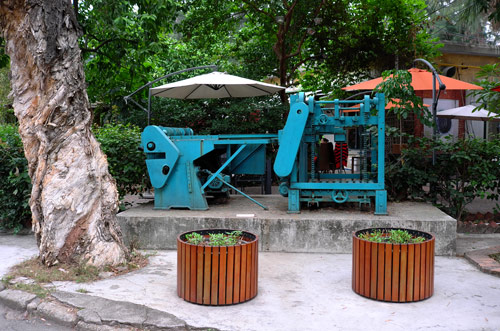
 |
|
Redtory Art and Design Factory of Guangzhou is based in an industrial hub, with canning equipment posing as sculpture. Rebecca Lo / For China Daily |
Redtory is fast becoming Guangzhou's mini version of Beijing's 798 Art District and a magnet for cultural activity. Rebecca Lo soaks in the ambience.
It was the container boxes that first grabbed my attention. Painted bright red and used as signage to welcome visitors to Redtory Art and Design Factory at the entry, they allude to the clever reinterpretation of ordinary things to come. Situated across the Pearl River from Pazhou Exhibition Center and east of Zhujiang New Town's glittering skyscrapers, Redtory used to be a factory site.
Its name refers to the 1950s red brick industrial buildings that dominate the three-block community. From 1956 to 2008, the area was home to Guangzhou Eagle Coin's canning facilities, specializing in mass production of its signature canned dace with black bean sauce.
"This area has more than 2,000 years of history," says Alice Wong, Redtory's chief manager, art director and chief curator, as she takes us on a tour around the buildings that make up Guangzhou's buzzing art hub.
During its half-century existence as an industrial hub, it was one of Asia's largest canneries.
"These buildings were government sponsored factories that were built as part of new China. Factory workers were happy since they didn't need to farm anymore. At its busiest, there were 2,000 people employed here. In 2008, the government cleared the land and it was transformed into an art district," Wong says.
As the industrial park was one of China's partnerships with the former Soviet Union, the buildings were designed with the formality typical of mid-20th century socialist architecture.
They have an axial symmetry that includes a high main building with clerestory windows and low sides, and are clad with red brick.
